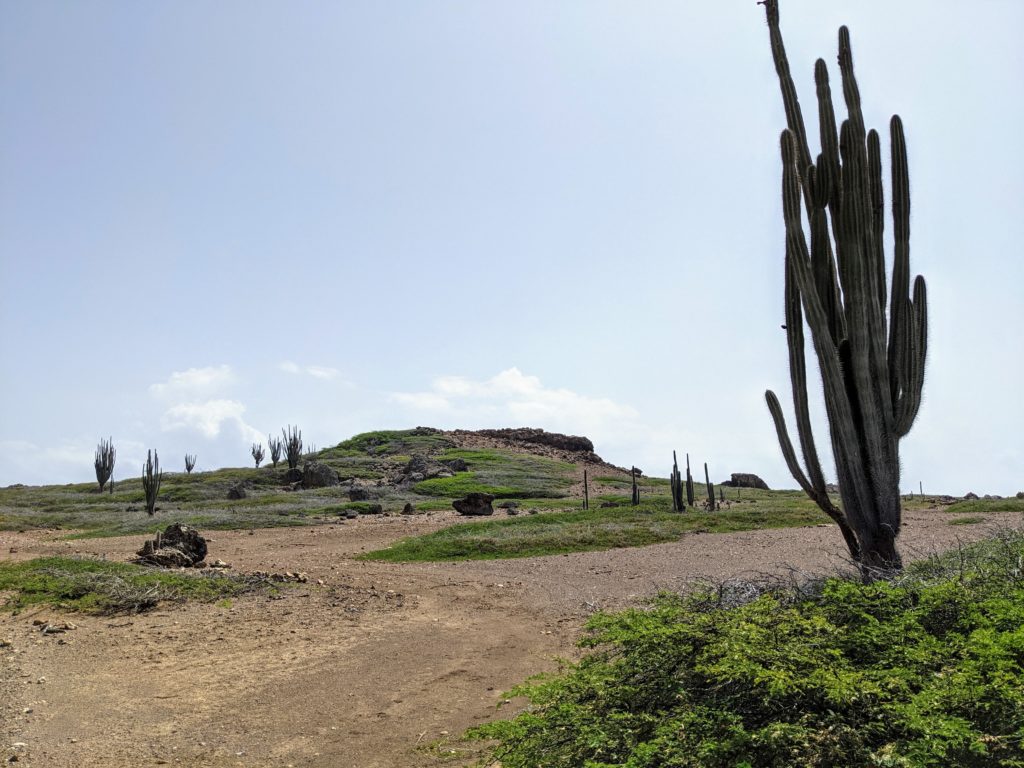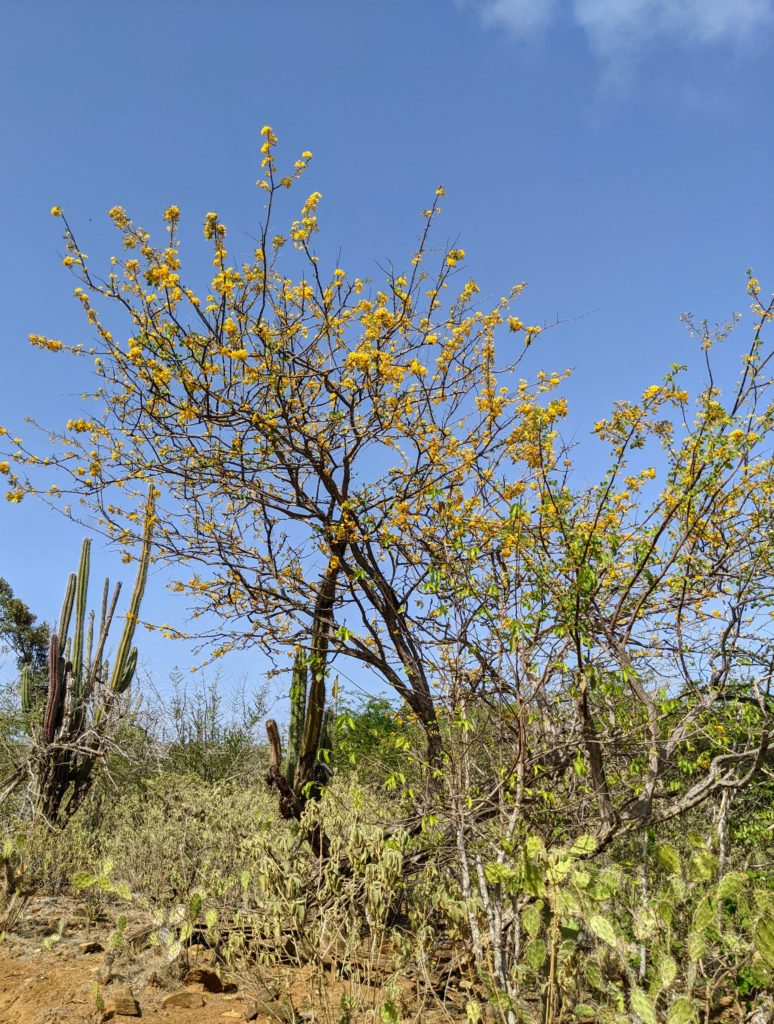Everyone told us horror stories about how rule-oriented the park employees were about time: you must arrive by 10 to enter, you must start the hike by noon, you must leave each site along the one-way route by some other proscribed time. So we were a little stressed out when the previous cruiser didn’t get the rust bucket keys to us until later than agreed, and we got less of an early start than we’d planned. We drove the hour north to the park entrance and managed to beat the deadline, so despite some side-eye from the gatekeeper, we were able to enter and drive around the “big loop”. The first leg of the drive is much like other parts of Bonaire, except wilder and with bigger cactii.




The first landmark along the way is Playa Chikitu. (Papamientu draws a lot from Spanish and Portuguese, so if you think you know what that means, you’re absolutely right.)





As you continue north from the beach, the vegetation thins out, and you end up in a barren landscape along the side of a two-tiered cliff.





The adjacent shoreline mirrors this ruggedness, with big blowholes that explode violently when the surf is strong. This day it was pretty moderate, so we got only small splashes.


Further north, the same coastal ruggedness manifests as a set of naturally occurring tidal-pool baths in the slightly protected Boka Kokolishi. Slightly.





Our next stop would be the “mountain”, Subi Brandaris, but first, we would drive back under the cover of plants. Along the way, we found a typical specimen of the giant cactus trees throughout the park, and a pretty impressive collection of succulents growing in the branches of some trees.


We parked and started the hike, and maybe five minutes in, Andrew slipped and “caught himself” on a “rock” that turned out to be the detached head of a cactus. Ouch!


We pulled out as many needles as we could, then shrugged an kept climbing. Jazz has been relaxing into our first-world tourism lately, and had finally stopped carrying her emergency medkit everywhere; ah well. It was a lovely day, but still too hazy to see the promised view of Curacao from the summit. Still, the view was nice, and we saw lots of birds along the way.









Our next stop was not as much fun. Put Bronswinkel is a watering hole for a number of species of birds, but by the afternoon, when we arrived, the birds were gone or dormant. All that was left was a rank-smelling swamp, infested with swarms of mosquitoes. We got back out of there in a hurry.


We continued through the woods for a little while… (Can we call these woods? Scrub forest? Impassible cactus-land?)


… until we reached the parking lot for Boka Slagbai. You may remember seeing this place from the ocean when we dove Wakaya II. From the land, our attention was captured by an inquisitive bunch of troupials, who had learned that unlocked, open-windowed tourist vehicles (as suggested by car rental agencies warning about theft) sometimes contain tasty snacks.


Also on the opposite side from the beach, a big salina was hosting a big flamboyance of flamingos.


It had been a hot day, and the snorkeling was supposed to be good, so we got in the water, and saw lots of little things in the fire coral – here’s a juvenile damselfish, some colorful wrasses, and a blenny.



There was also an absolute monster of a rainbow parrotfish – the first one we’d seen. He was pretty skittish, which I guess is how you get to be that old.


There were two goldentail morays hanging out together, which is pretty rare. They seem kind of like a hydra, or a push-me-pull-you. To the right, a scorpionfish on the move, and a big chub just chilling (closer to shore so the water is murkier.)



There are also two underwater cannons. There are too many jokes about submerged military hardware to pick one.


Almost back to shore, we found a giant bait ball, and underneath it, a baby angelfish and a puddingwife wrasse.



We continued through the park, a long drive to complete the loop and reach the visitor’s center. Along the way, we stopped to take a picture of this one, single, flowering tree. This is not an example, it is the only one we saw. Once back at the visitor center, we stopped to check out the giant whale skeleton.


Back home, Jazz did her best to get the remaining pieces out of Andrew’s hand. Some pieces were easy, while others would take weeks to work their way to the surface. Don’t try to fight a cactus, folks.


